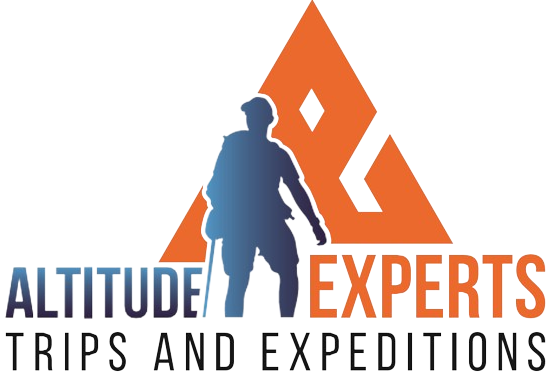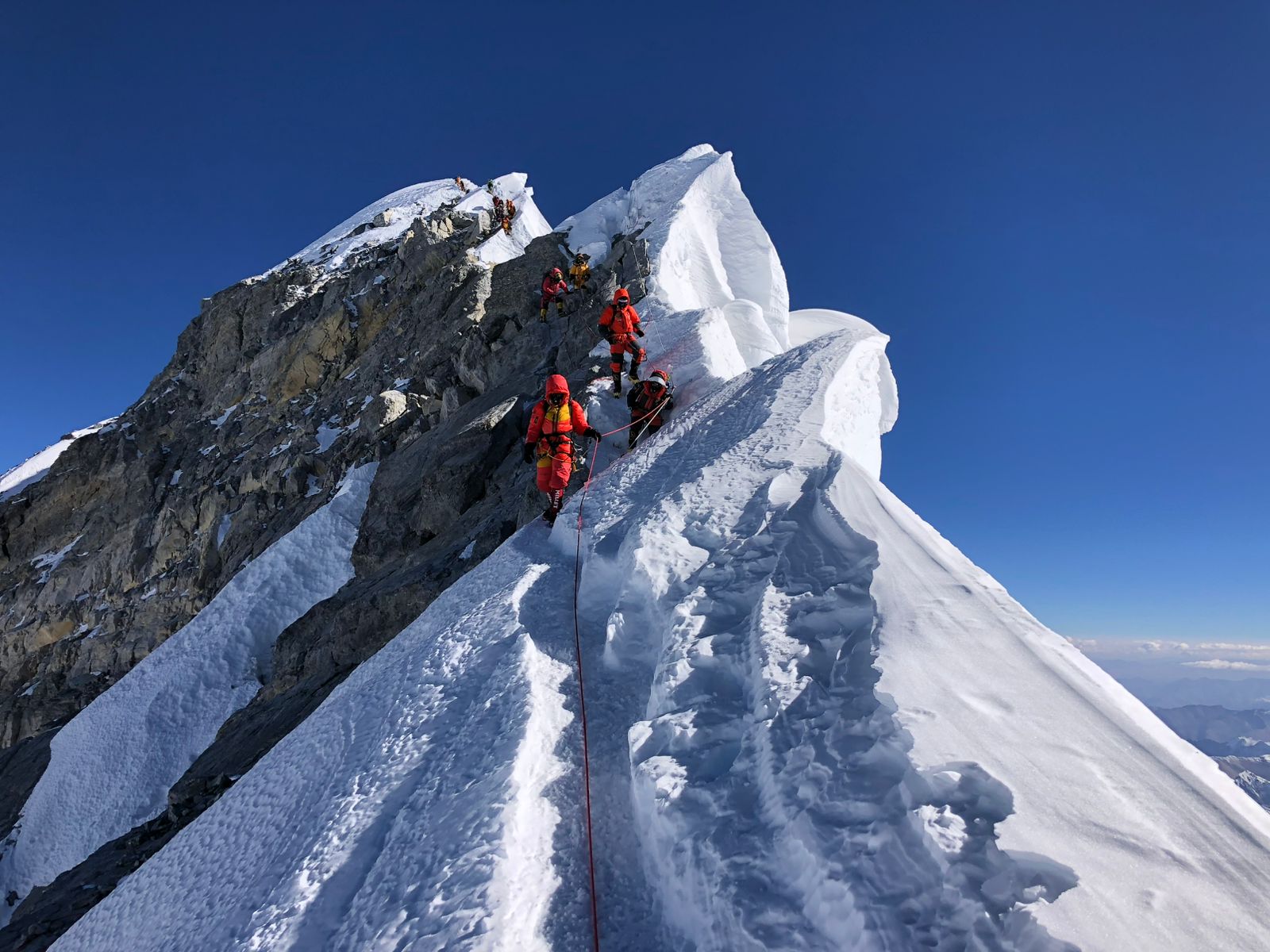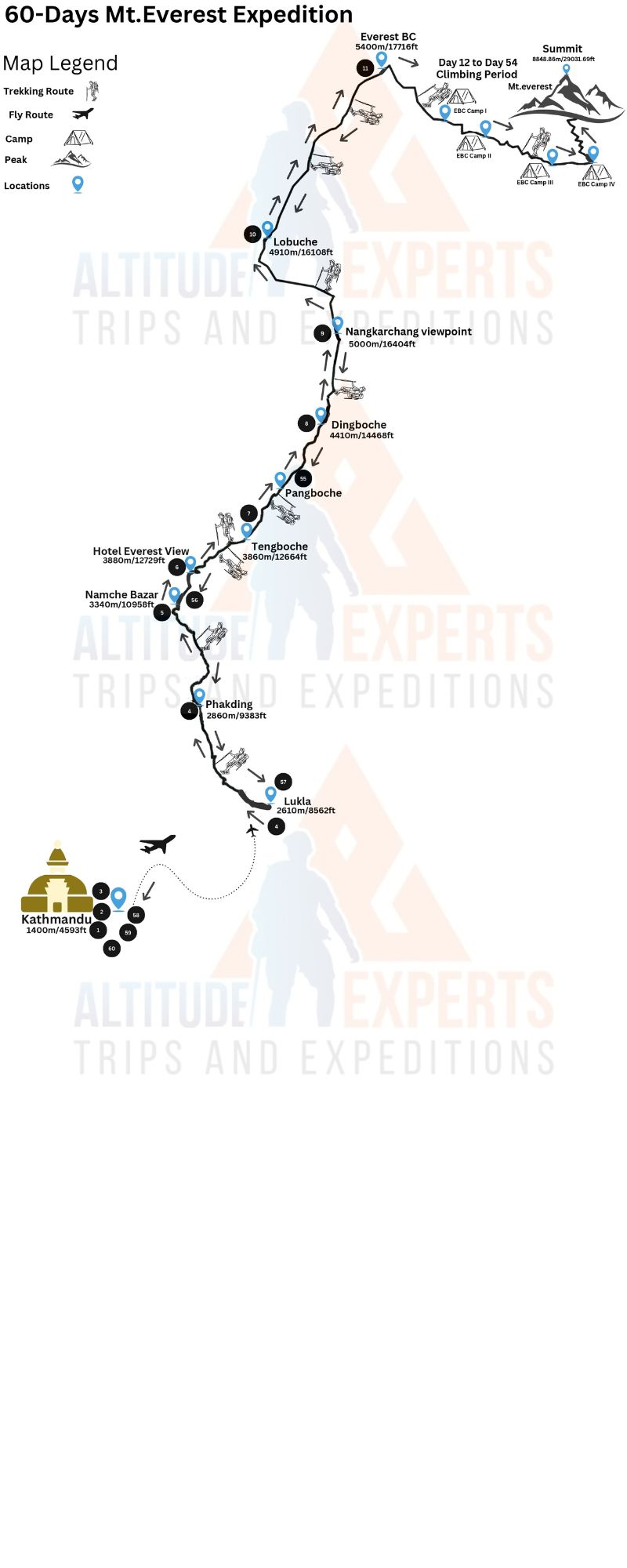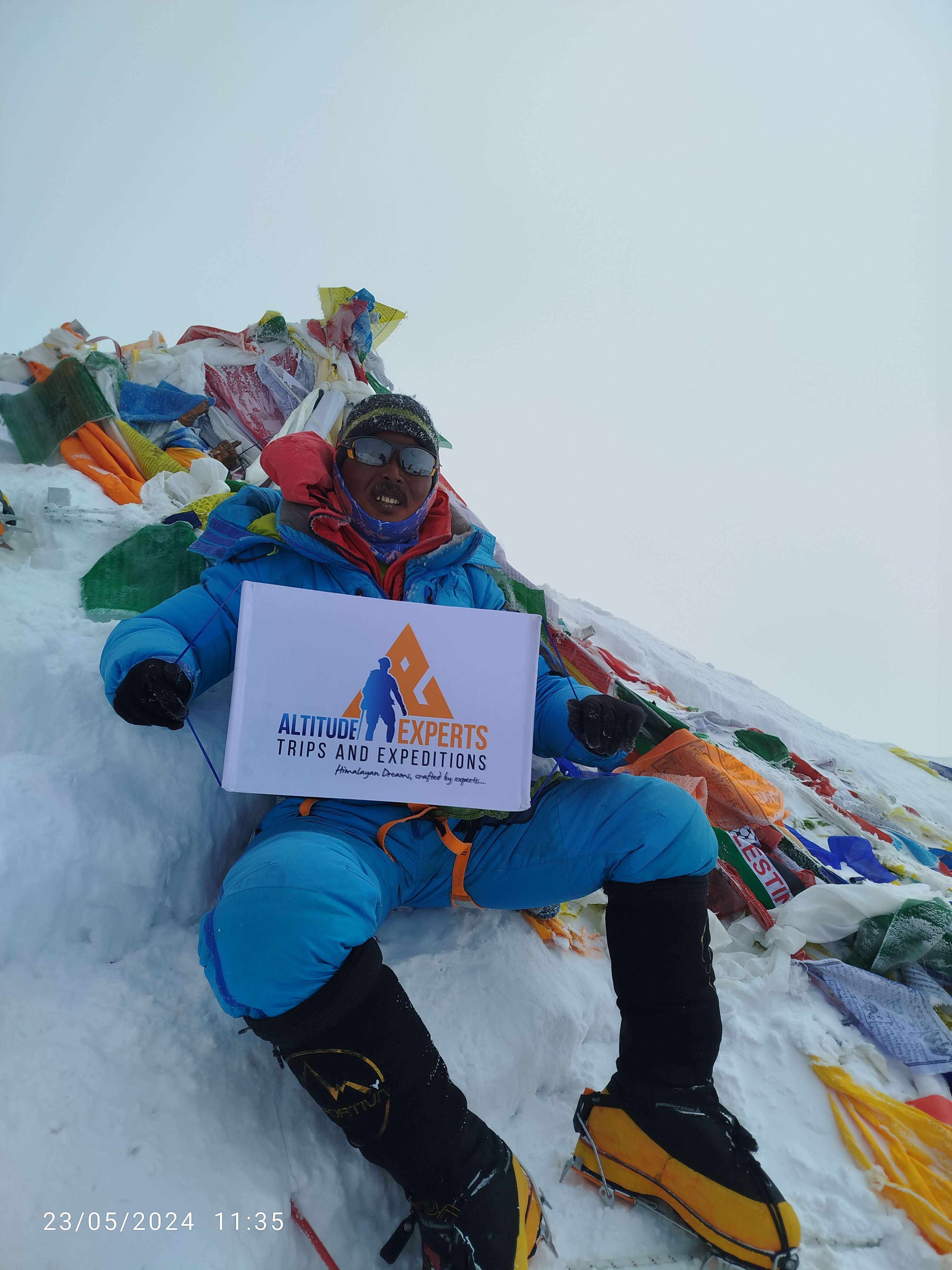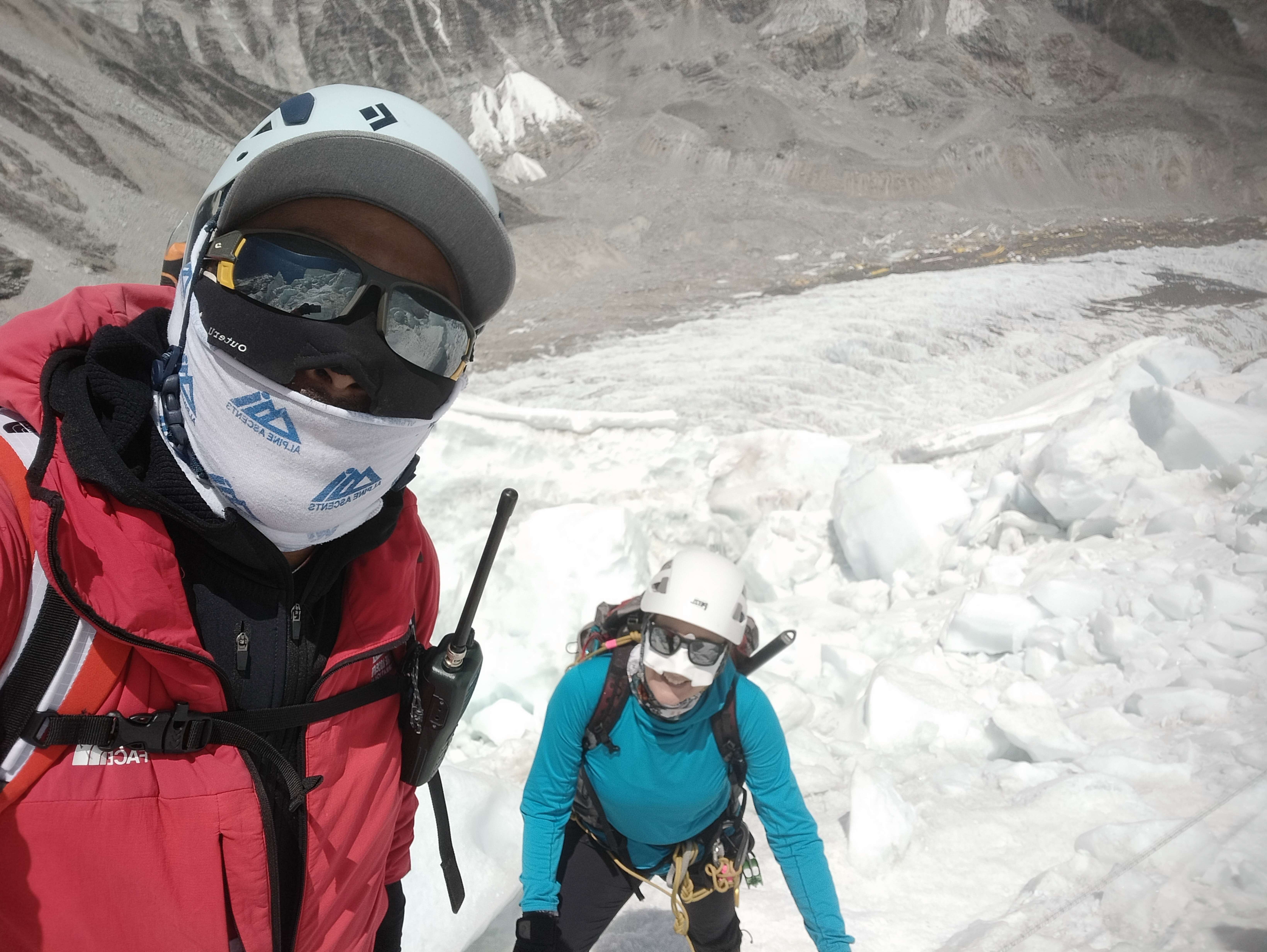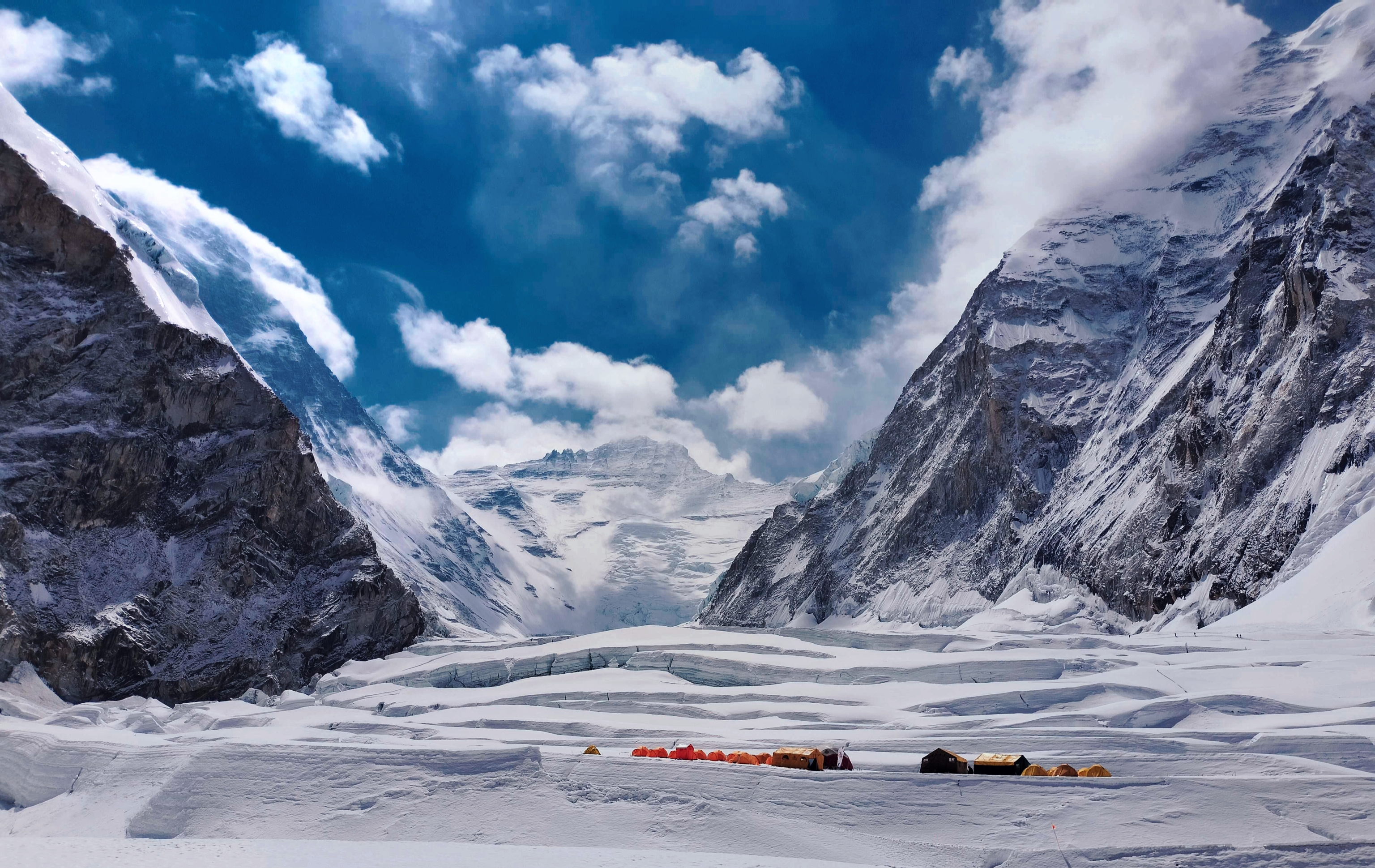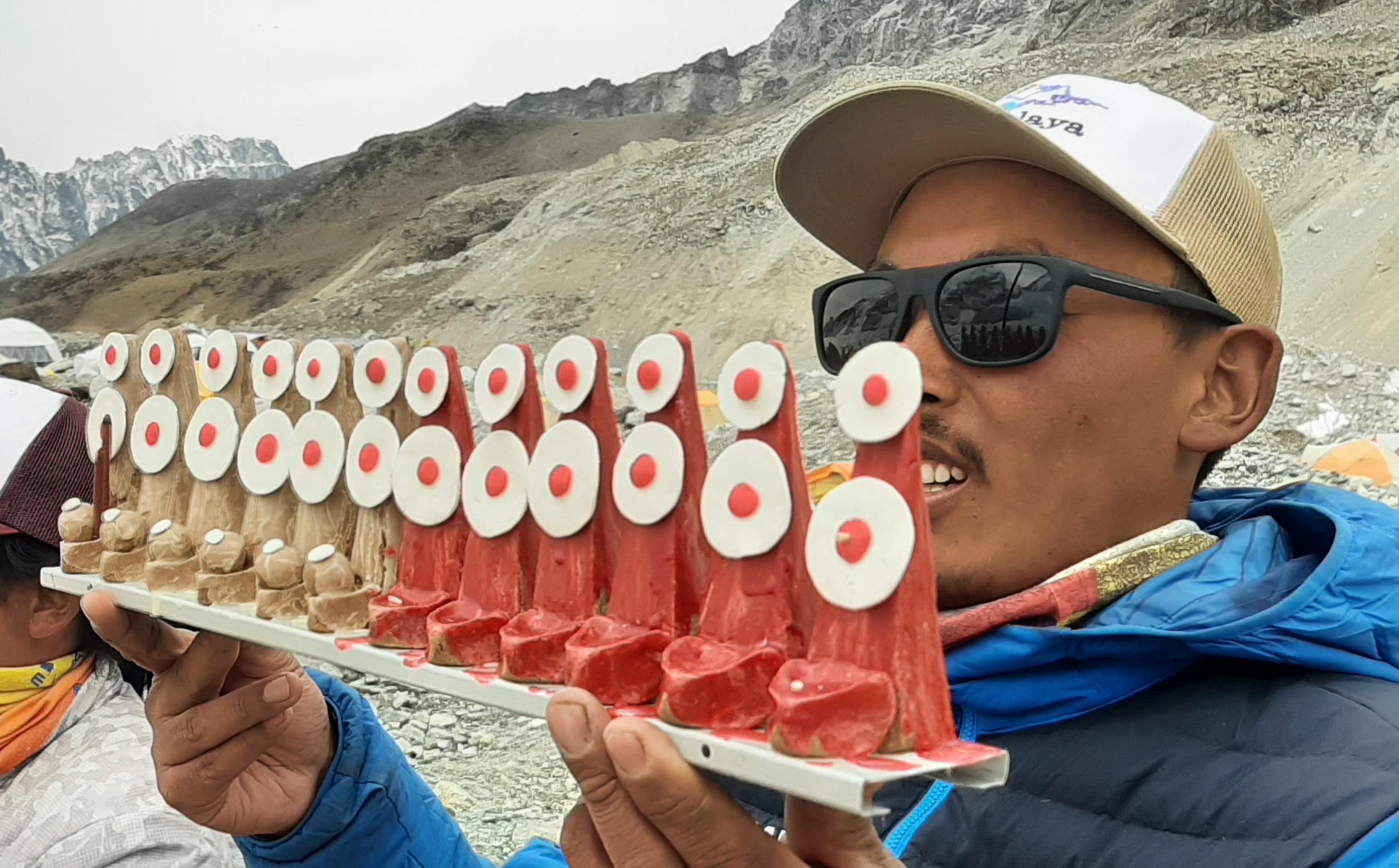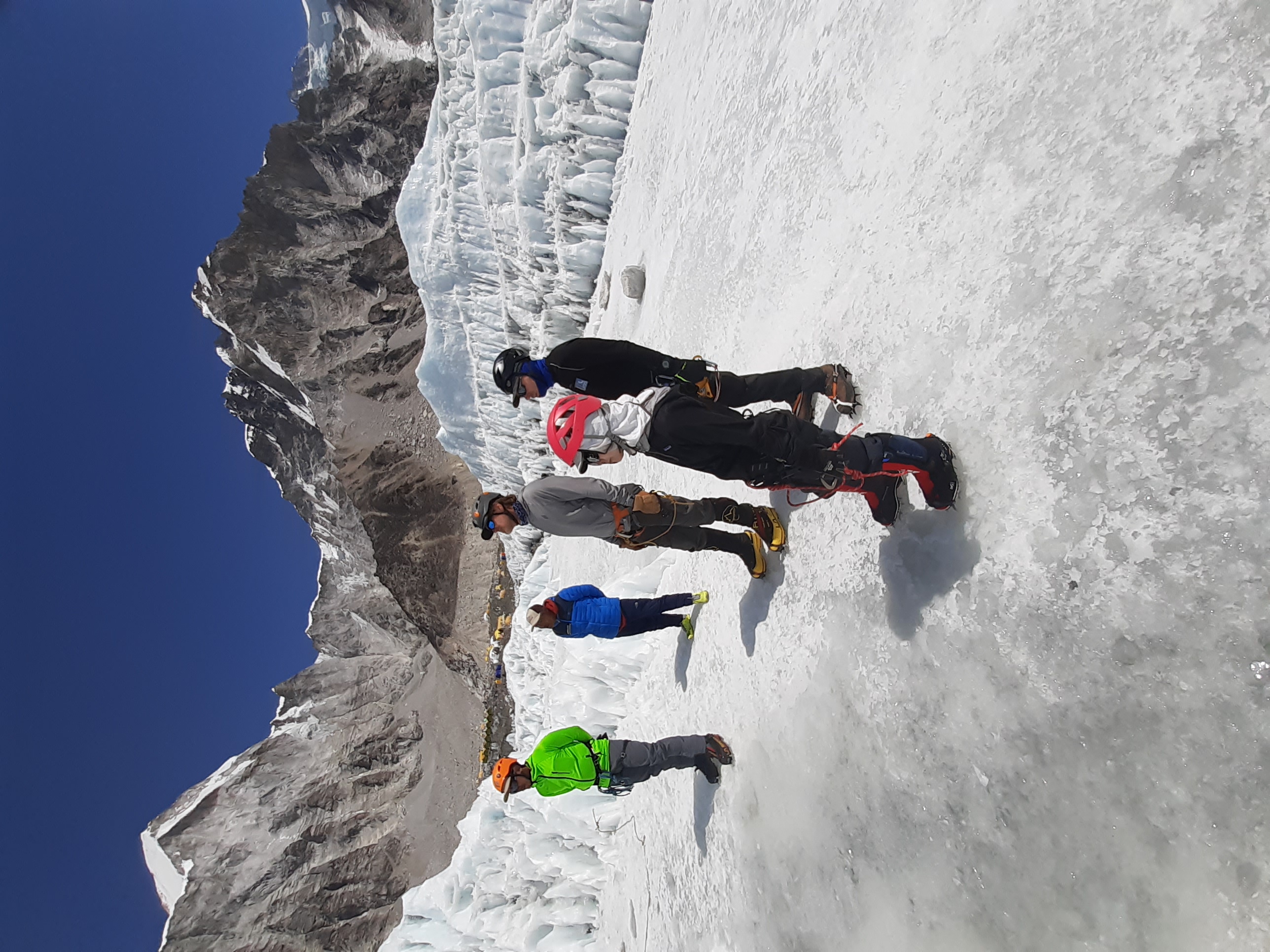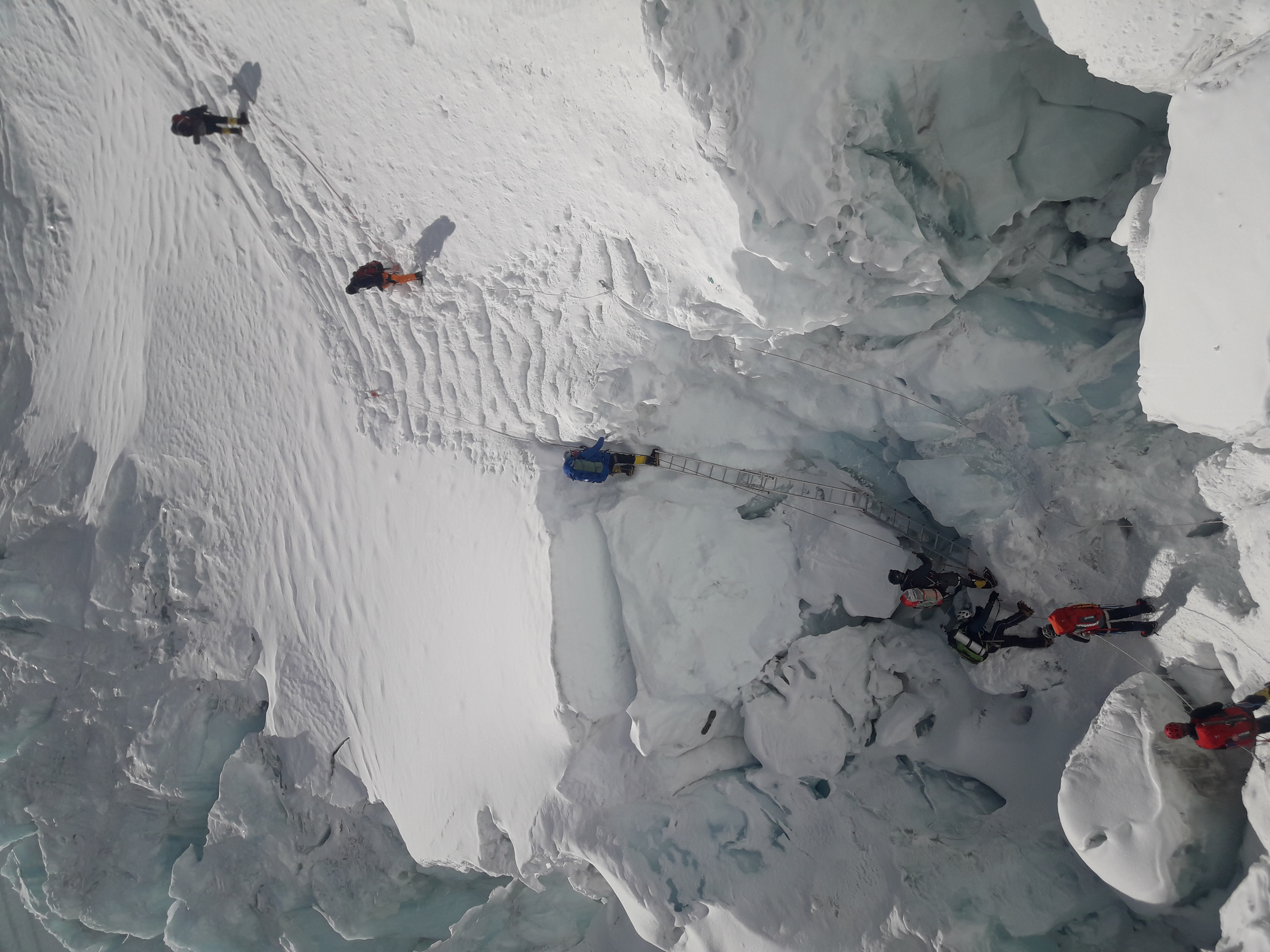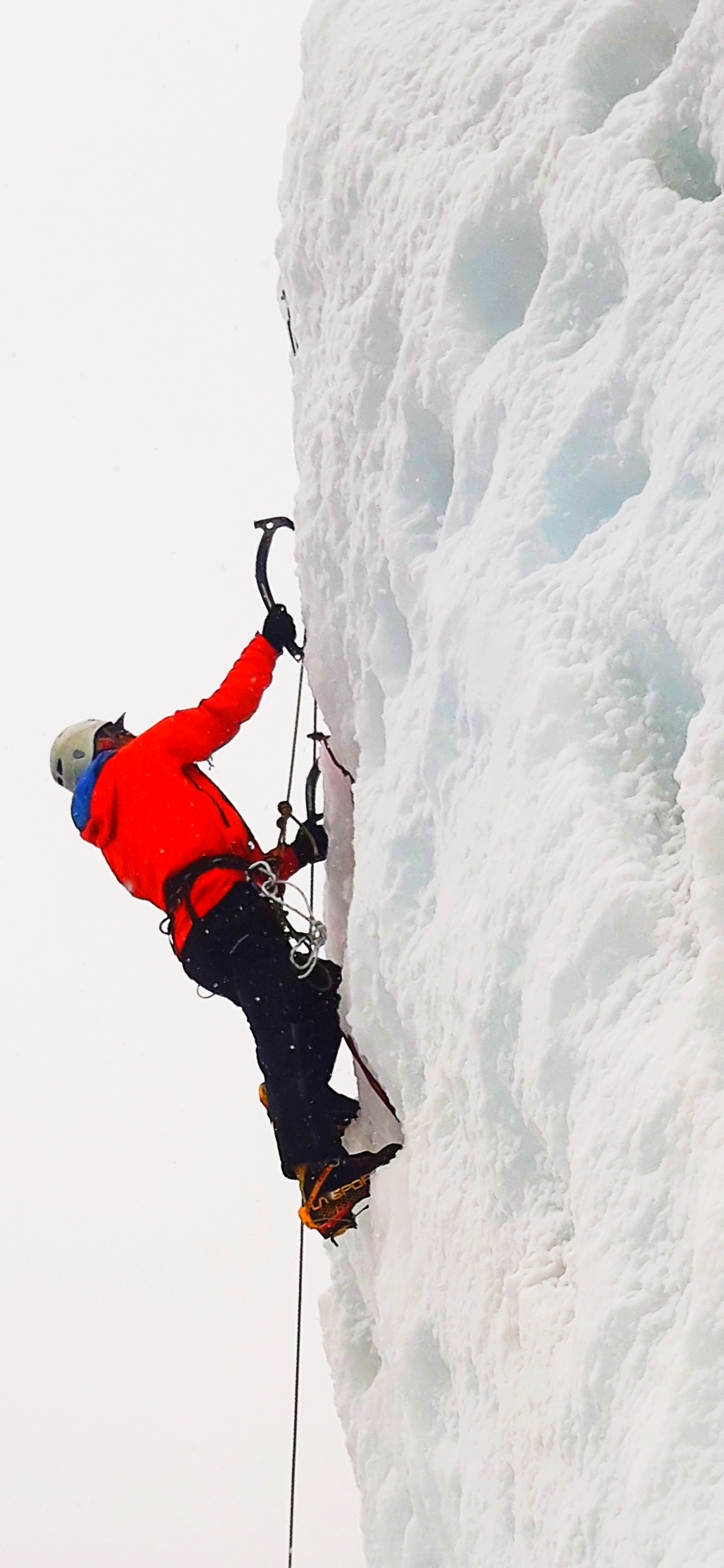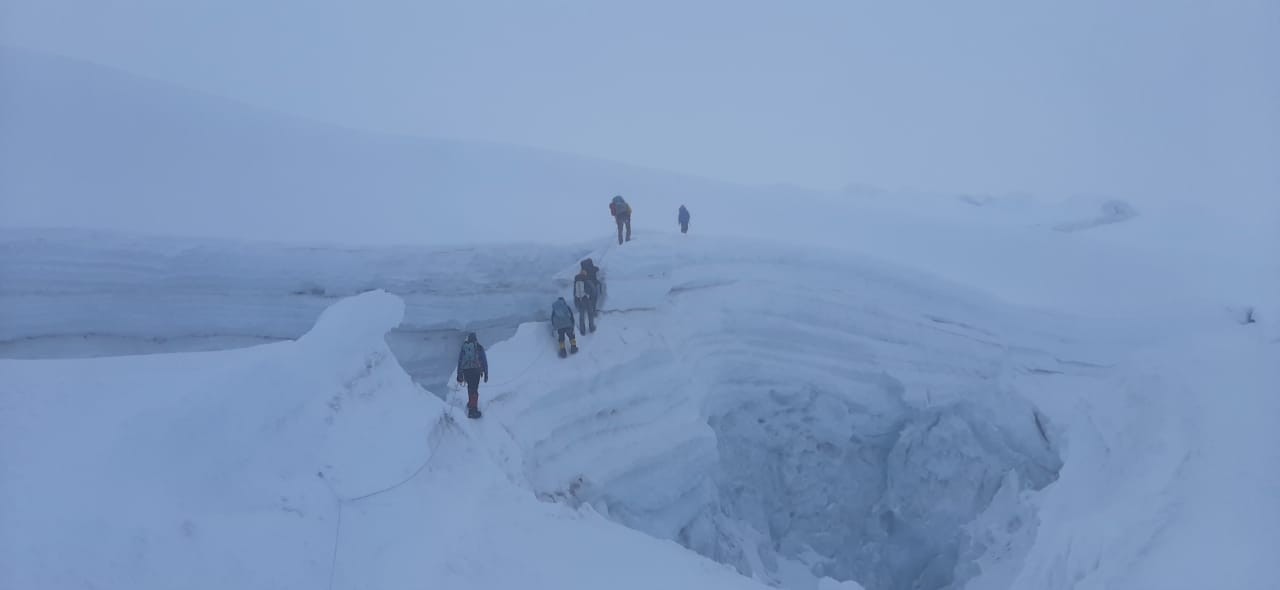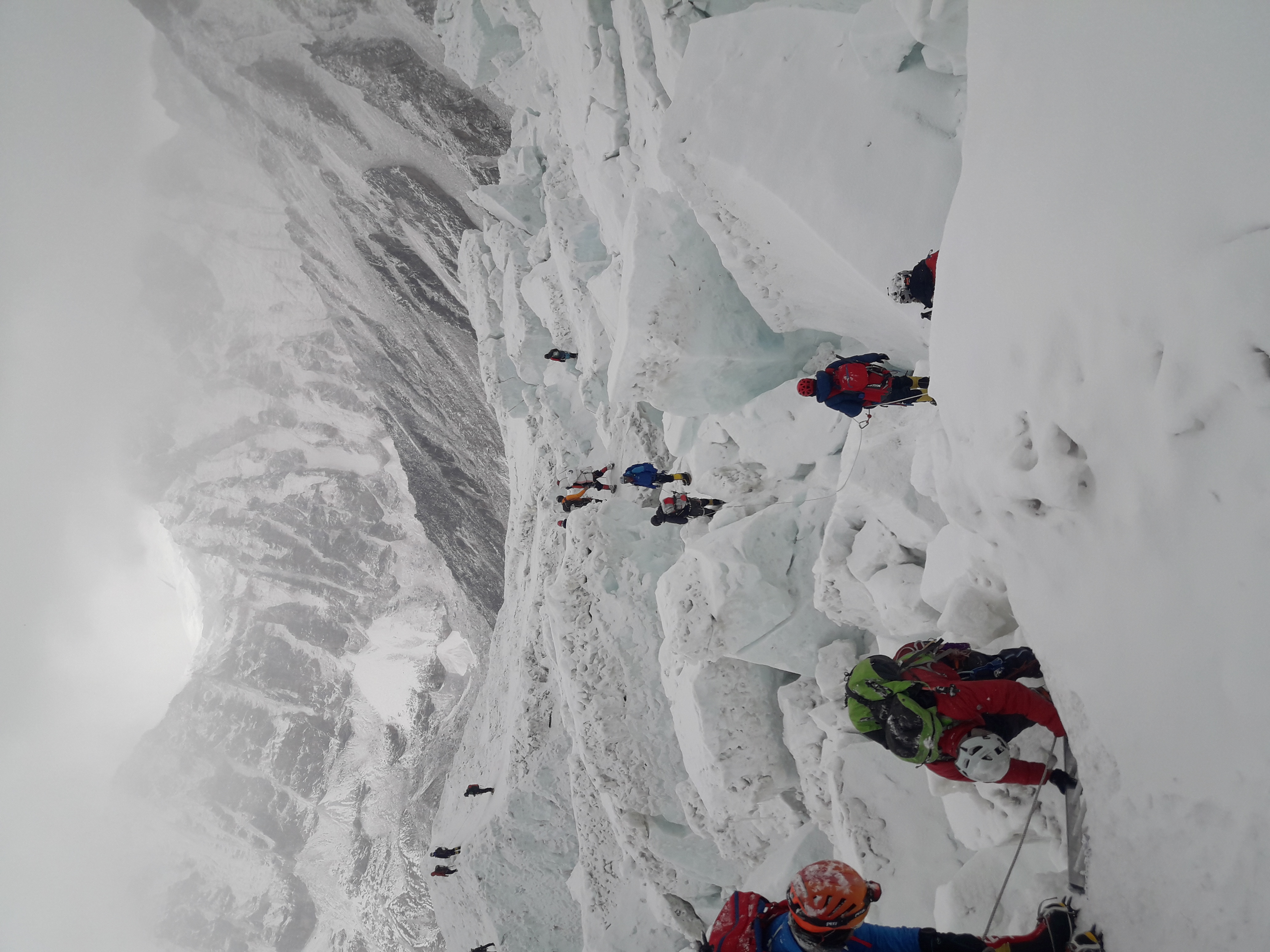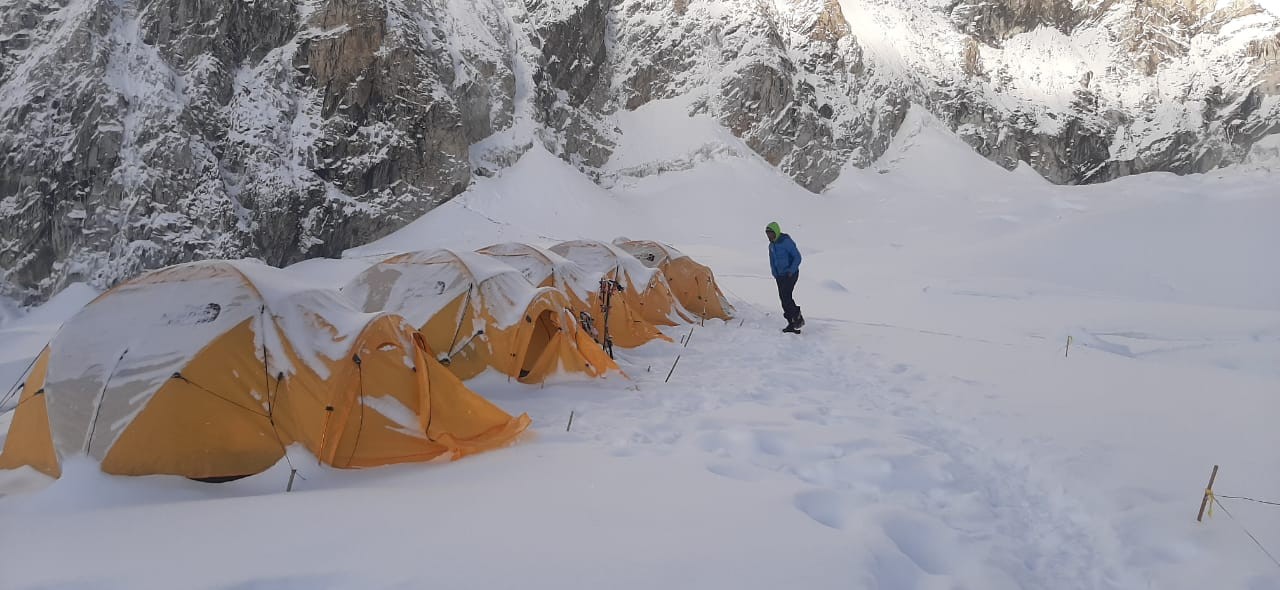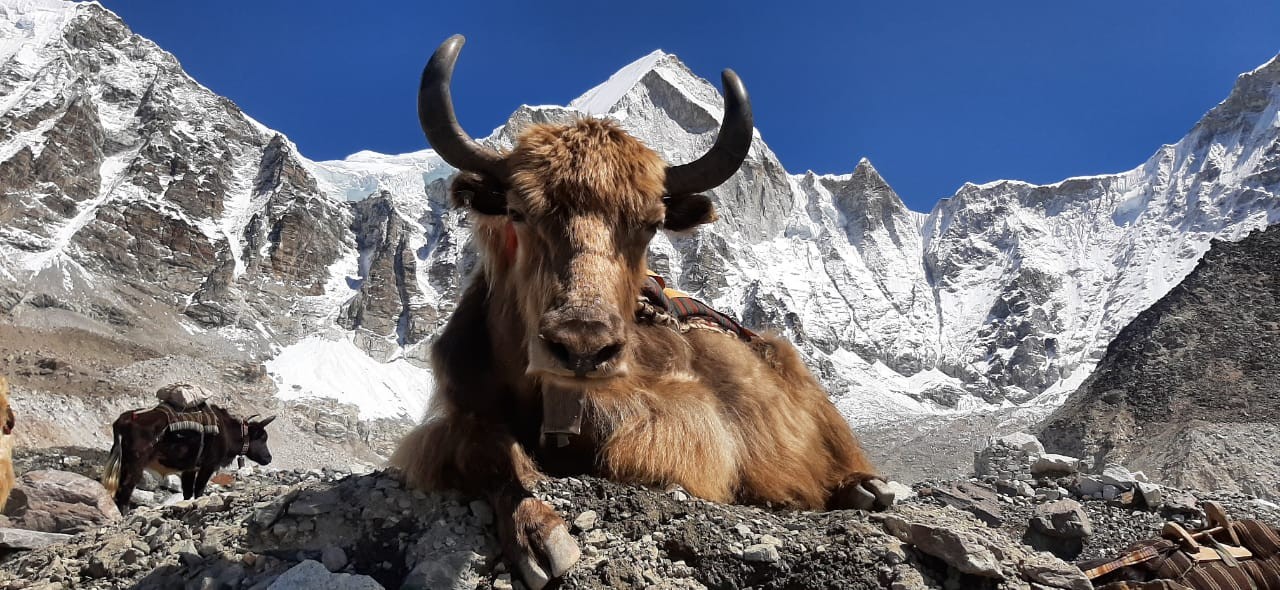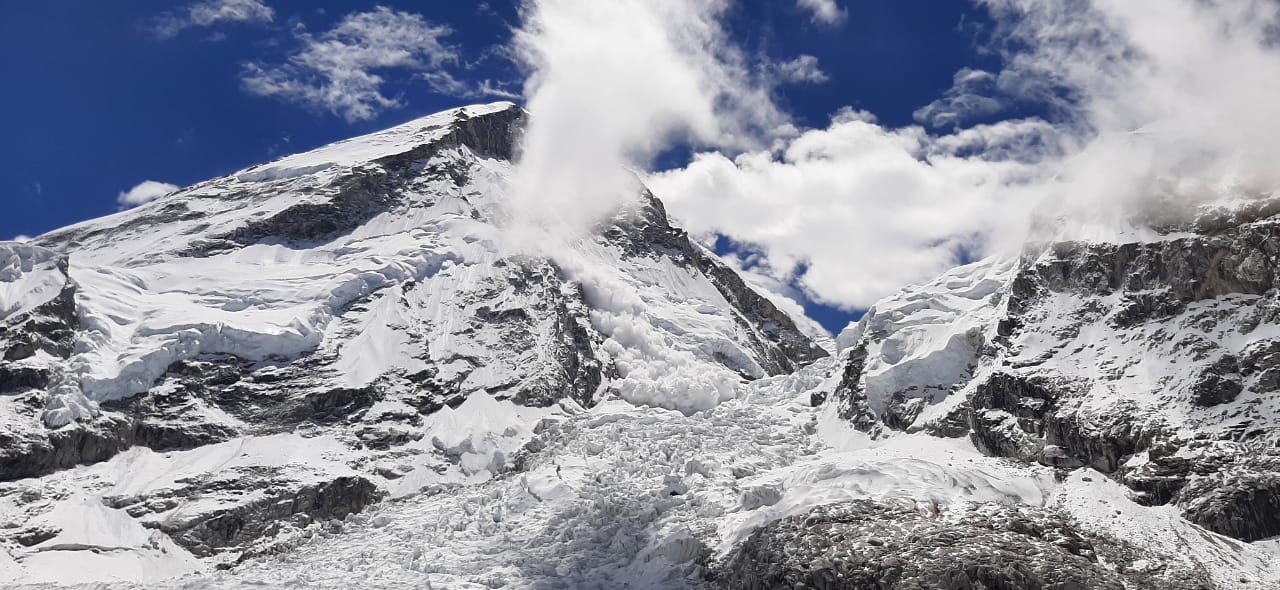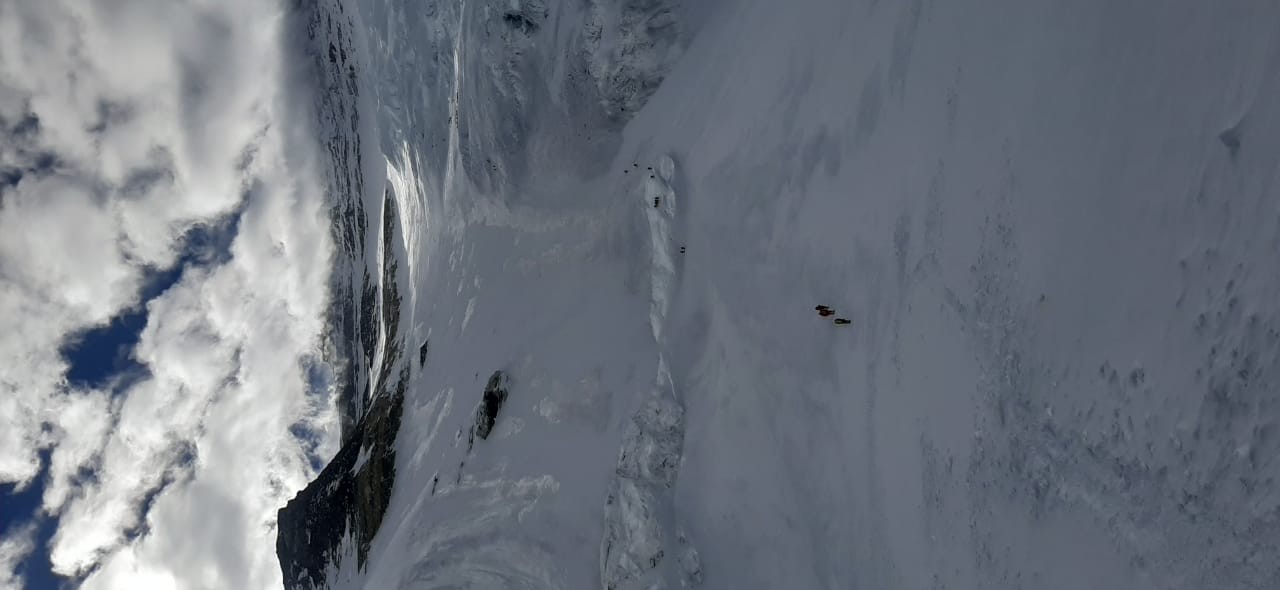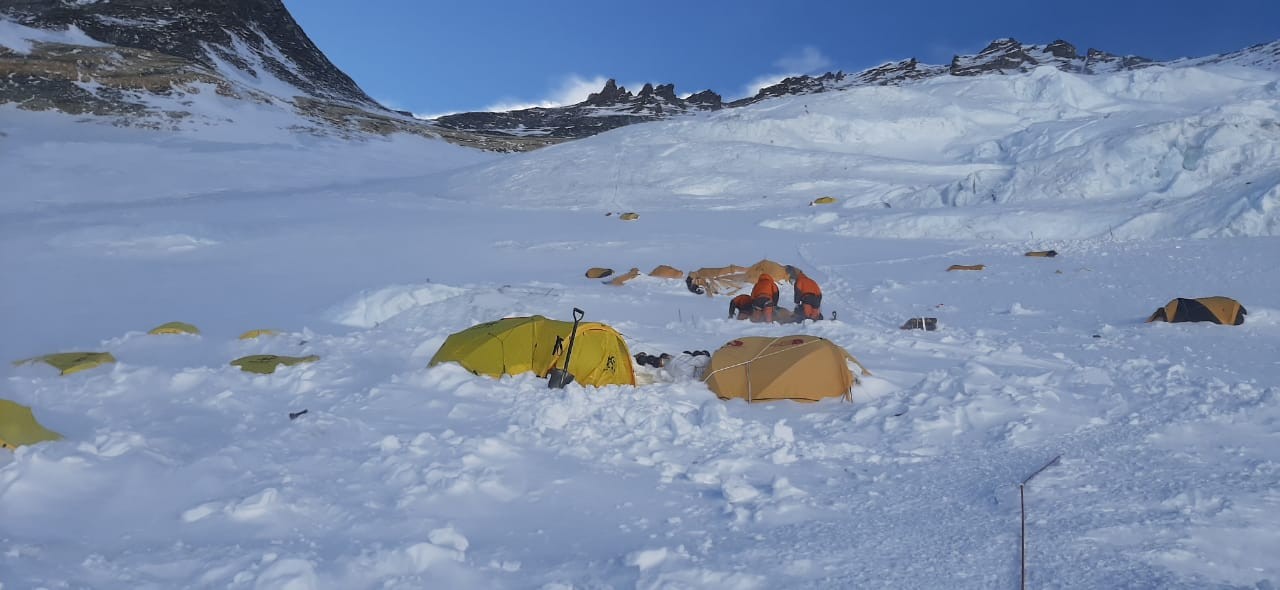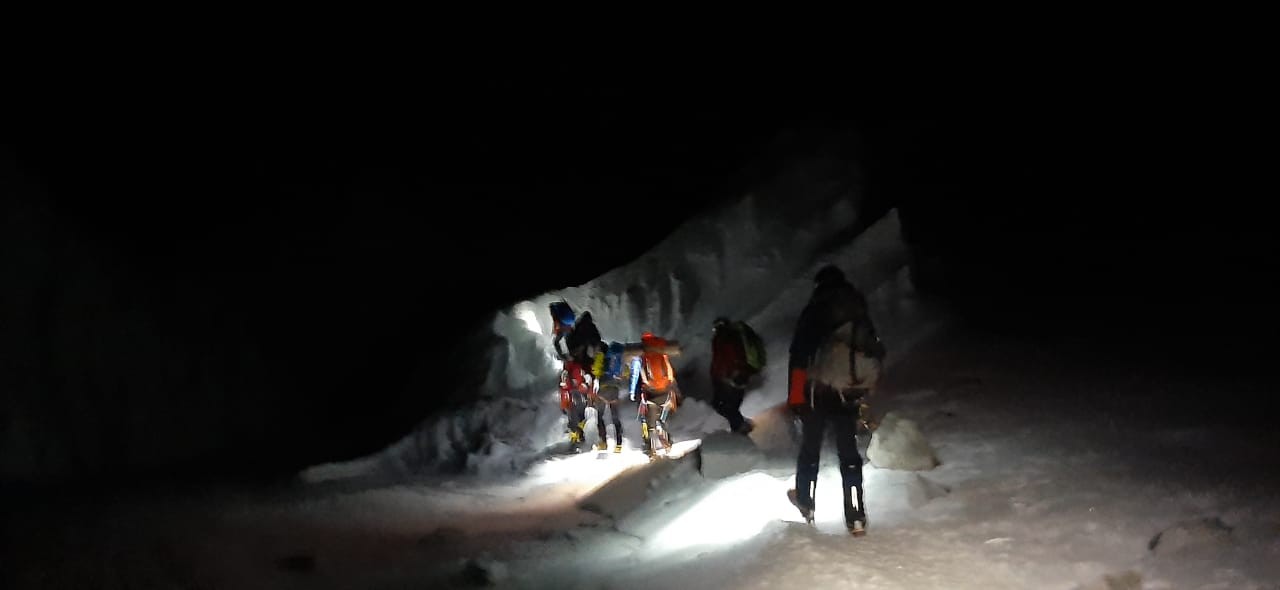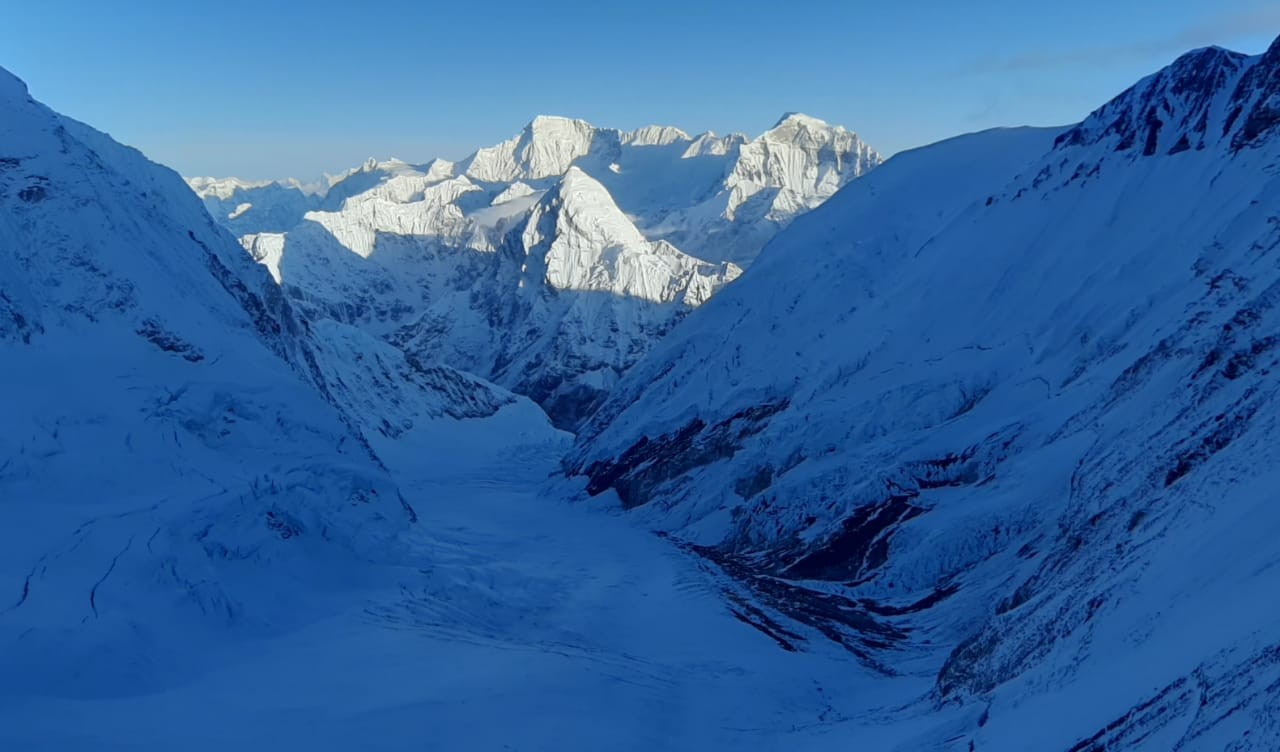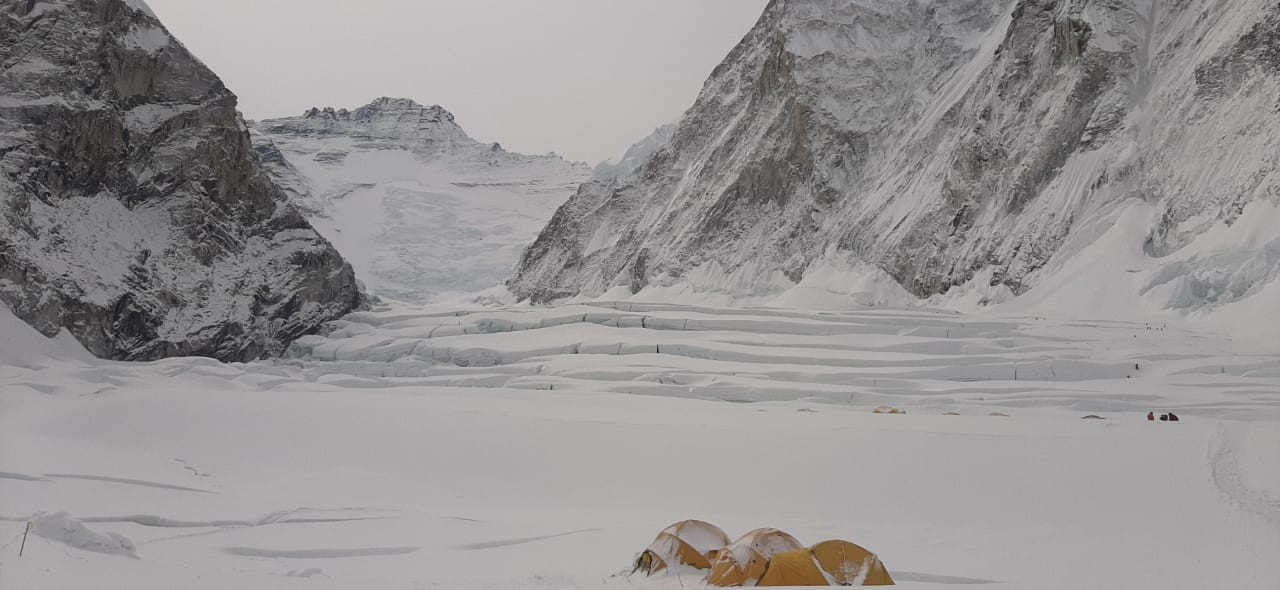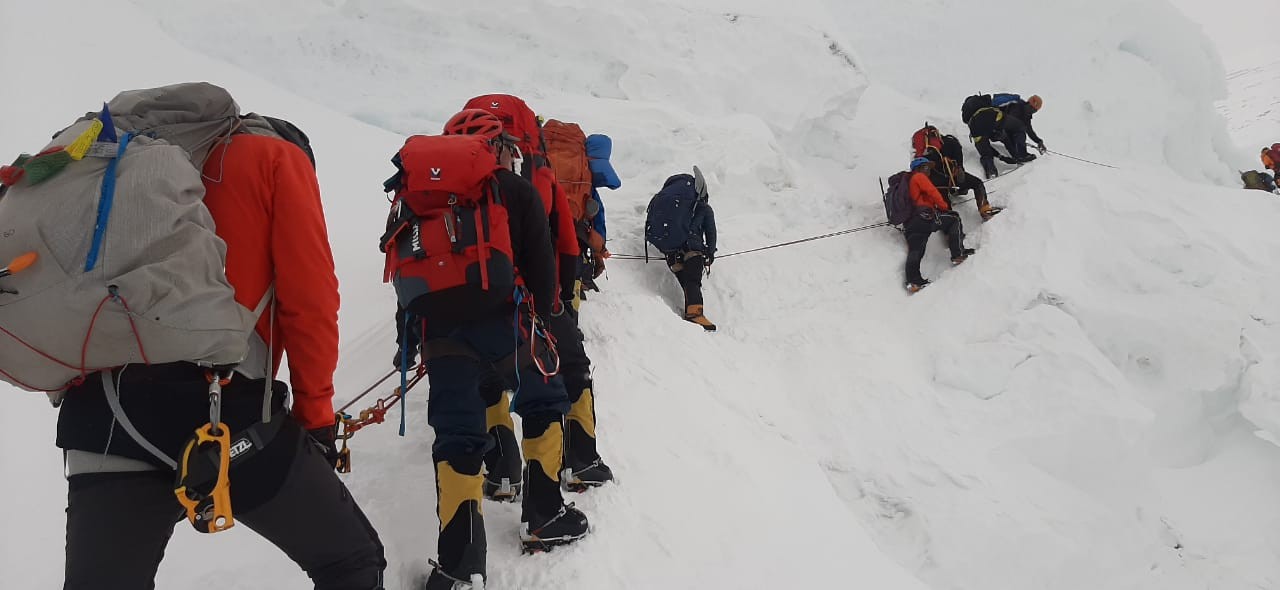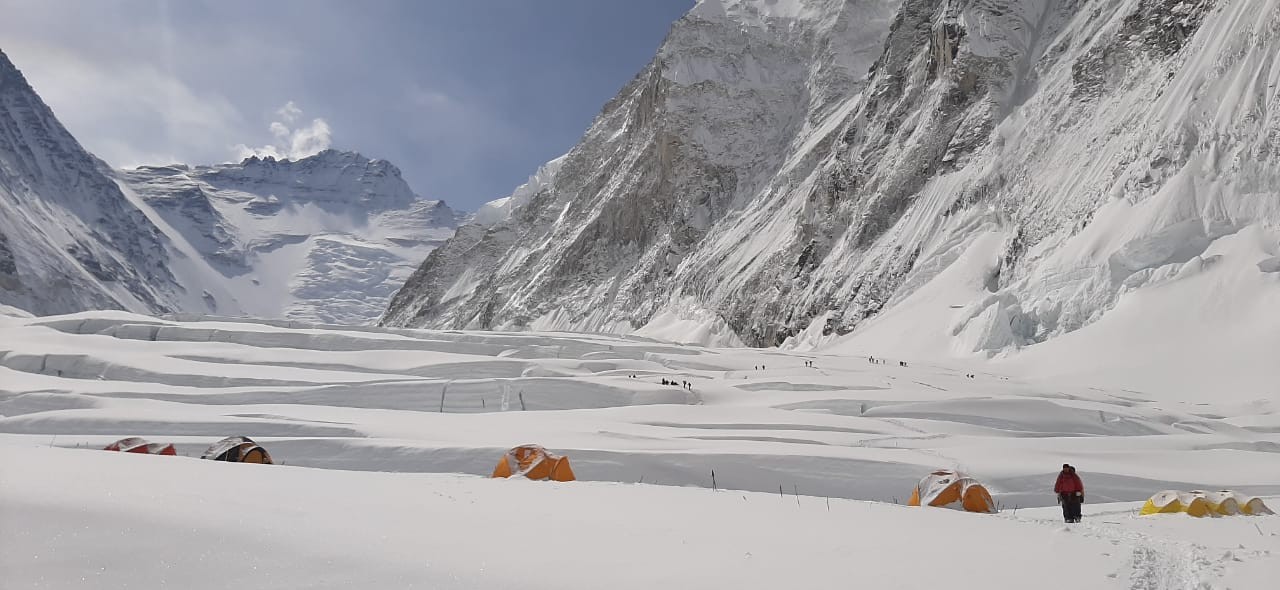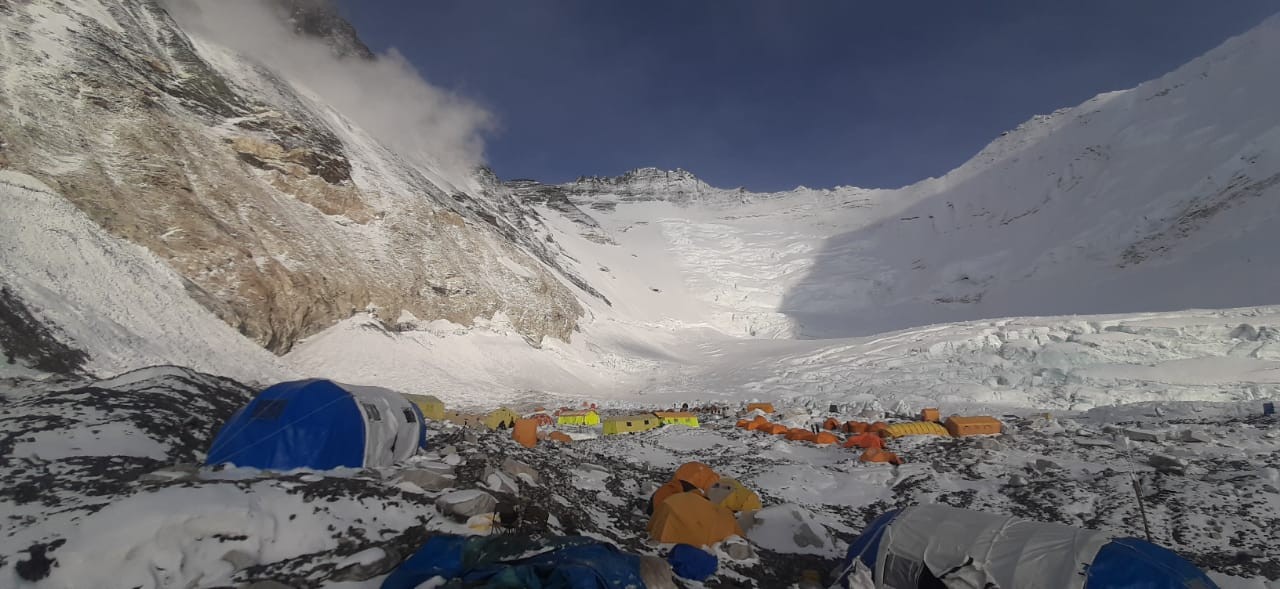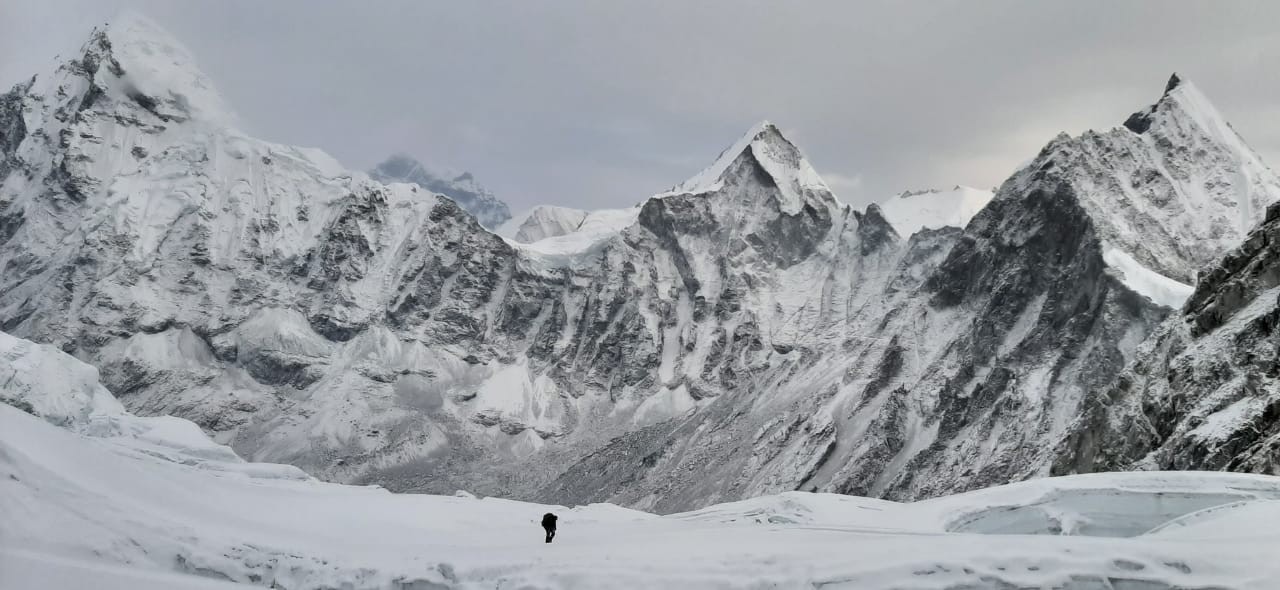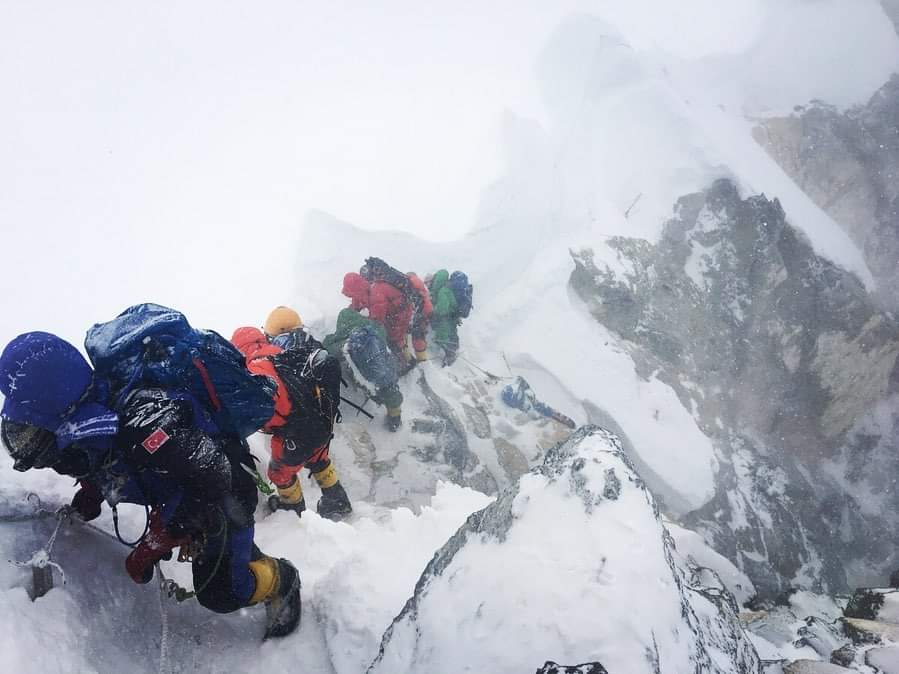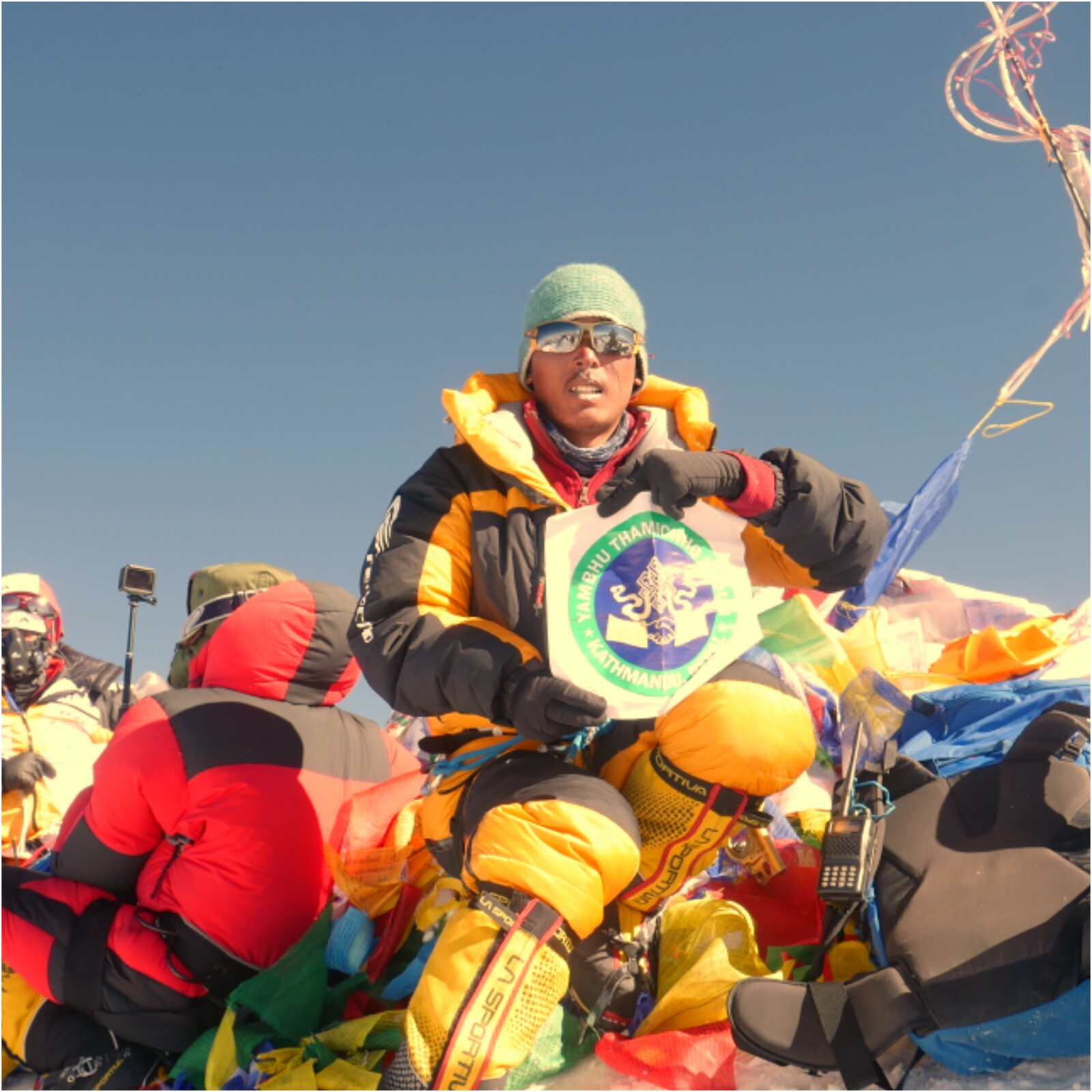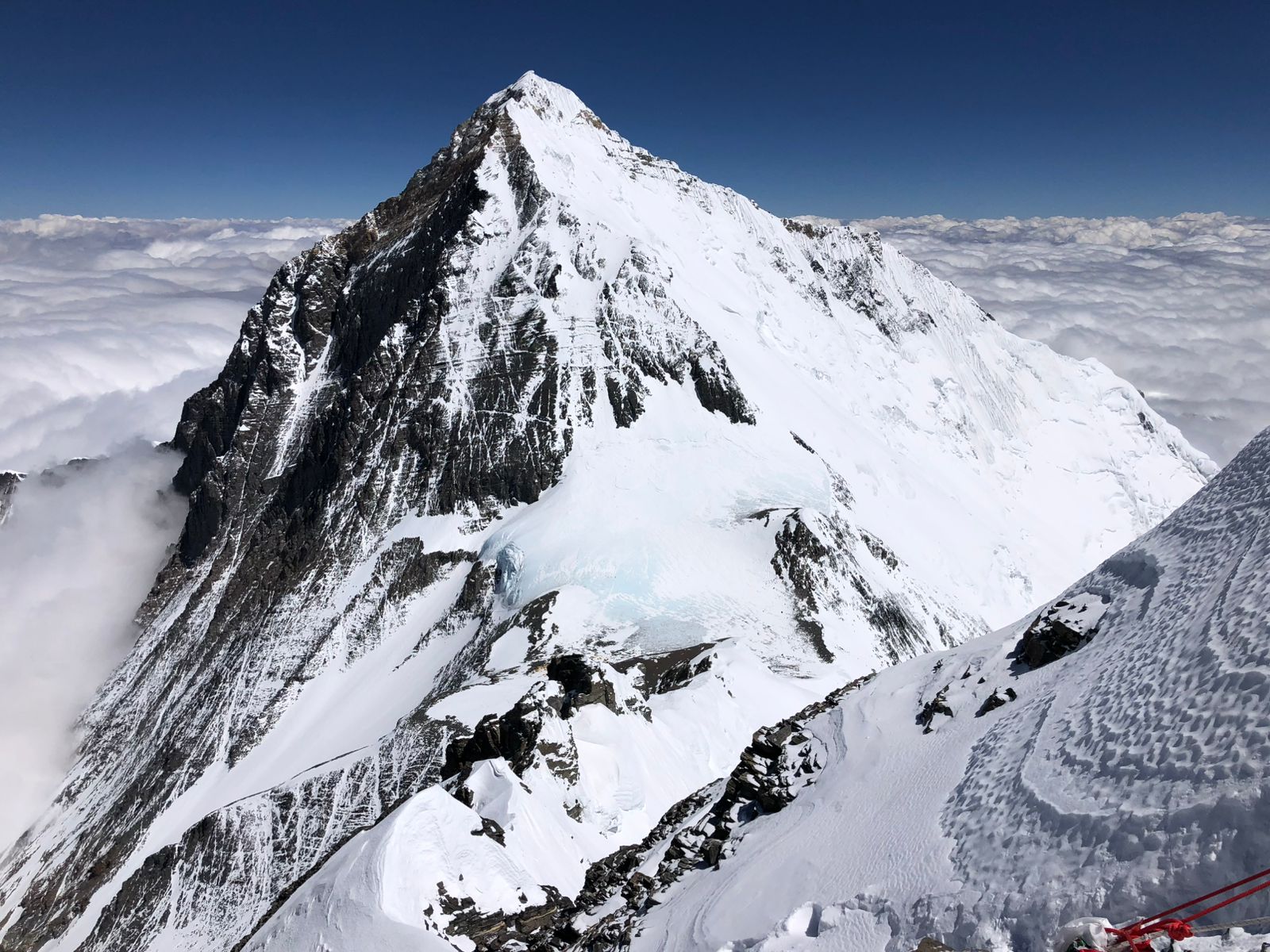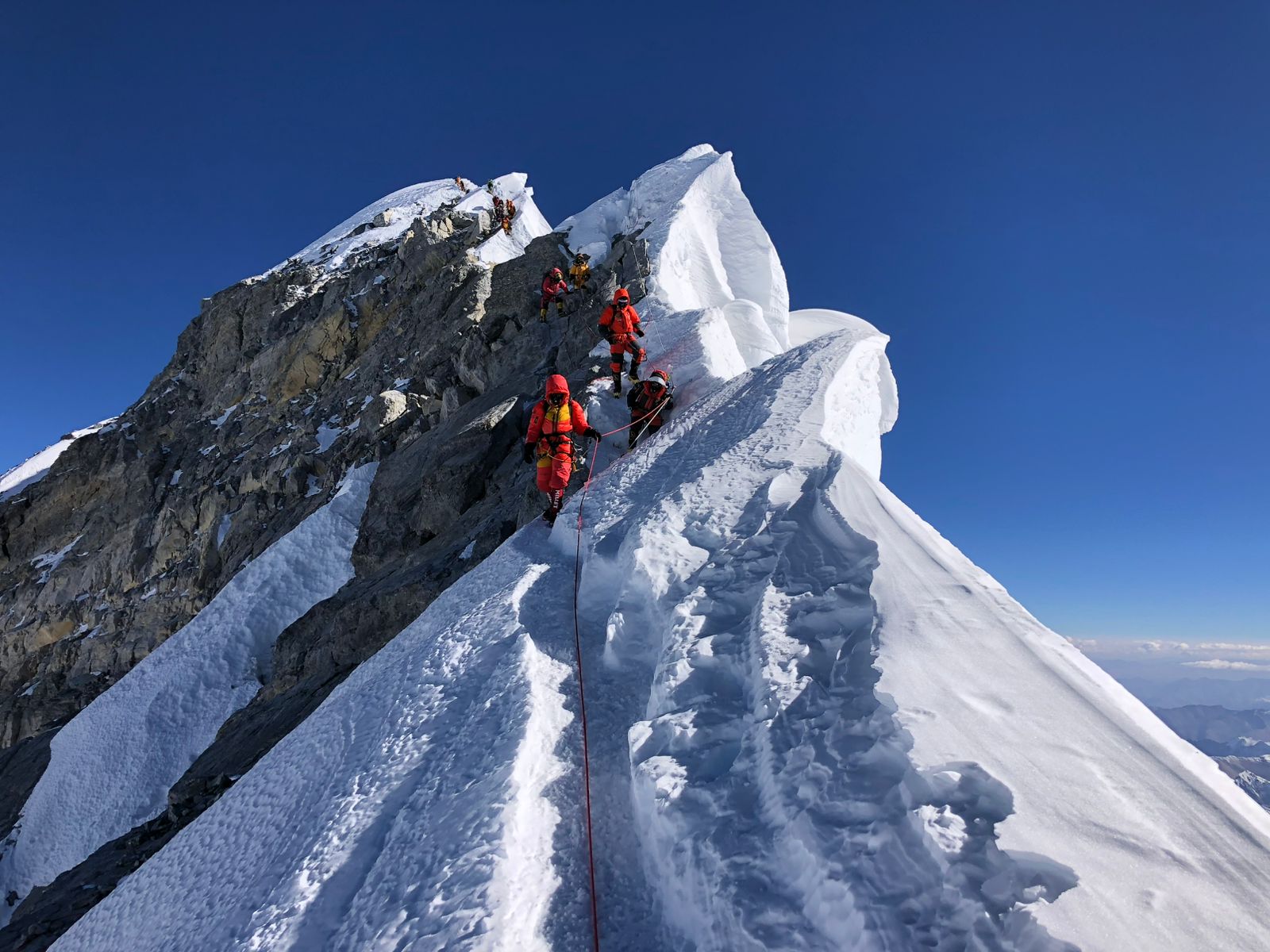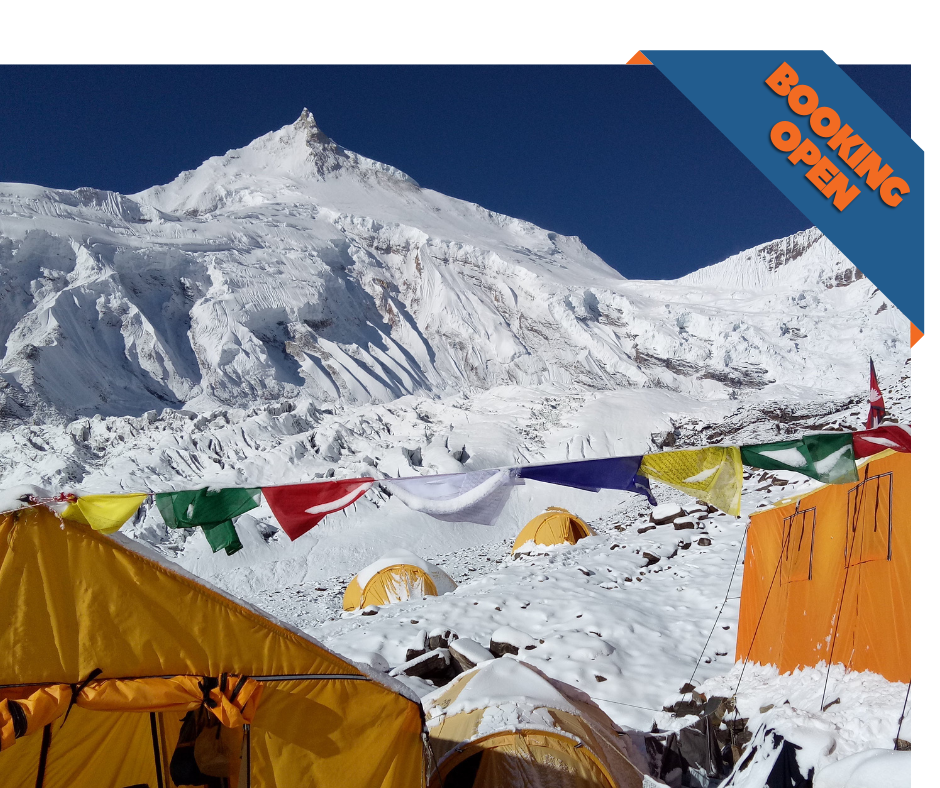Phase 1: Puja ceremony & Training
After we reach base camp, we will get 1- or 2-days leisure day to acclimatize our bodies well. Our sherpa team will decide our puja day on a very auspicious day according on the lunar calendar. Puja ceremony in other word is taking permission with nature to step on their body. The local ethnic group from the valley believes that all mountain has its own gods and goddesses, so we need to take permission before we step on. Puja ceremony is performed by a monk from the nearby village, Pangboche. Your guide will instruct you well on the day before the ceremony. The day will be full of relaxation, enjoyment, dancing, and singing.
After the day of the auspicious puja ceremony, your training session will start for two days. One of our best climbing guides will lead a session that includes gear demonstration, walking on crampons, use of technical gears and walking on fix lines etc. Our team of guides will instruct you about using all technical gears and set up the fix line near our camp in lower ice fall and show you the demo of walking on the fix line using your high altitude all-in-one boot and crampon. The pre-basic training session will take place for one or two days in basecamp.
After a great training of one or two days, our Phase 1 of climbing is done, and you are ready to climb up further.
Phase 2: Acclimatization rotation on the Mountain.
We designed the best rotation that suits all levels of people who live at sea level, to acclimatize well on the mountain.
Rotation 1: Lobuche Peak Climbing
The Labuche peak climbing is considered as the first acclimatization rotation and training session for Everest Expedition. Labuche peak climbing is an advantage tour for the clients of Everest expedition for which clients are not paying any extra for the 6000 meters peak climbing. This acclimatization rotation is designed to make less movements in Khumbu ice fall.
Day 1: Trek to High Camp (5,400m), 6 hours walk.
After some days of acclimatization rests, trainings and great puja at basecamp with our team, our first rotation of climbing starts. After a great breakfast at our own camp, we will retrace the same trail back to labuche. Today our camp will be at High Camp, the last camp before the summit. Having lunch at Labuche village, our journey starts on a rocky moraine trail towards the High Camp which takes around 3 hours from the village, where we will sleep in tents and have the meals prepared by our staff.
Overnight at High Camp.
Day 2: Summit Push to Labuche East (6119m) and back to High Camp, 10-12 hours walk.
We will wake up after midnight and leave between 2 am to 3 am depending upon various factors. We will be climbing on rock surface till 5800m. After that we will be climbing on ice and use both main rope and fixed line. However, the use of the ropes and length of the rope depends upon the season and crevasses. It takes around 6-7 hours to reach the summit. The summit offers an excellent panoramic view of Mt. Everest along with Khumbu glacier, Lhotse, Nuptse, Cholatse, Amadablam, nearby lakes and villages and some part of Rongbuk side to the Tibetan side. We will shortly celebrate the ascent and capture moments and descend down to High Camp where our staff will be waiting for us with hot soup.
Overnight at High Camp.
Day 3: Back to Basecamp
After a successful ascent of Lobuche east, our 1st rotation of the Everest Expedition is done. Today we will take the same route to the basecamp. And will have 3-4 days’ good rest by doing laundry, good hot showers and having great food.
Rotation 2: Touch camp 7000 masl/ 22900ft, 7-8hrs.
Day 1: Basecamp to camp I ,6065 meters (19900 feet)
The camp I of Mt. Everest lies above the Khumbu Ice fall 6km(3.7miles) far from basecamp. Today we are walking through Khumbu Icefall. We start our journey at midnight to avoid the sun in the icefall.Our climbing guide will instruct you about the gears and clothing, what should pack in and not. Our support sherpa team will help you to carry tents, your sleeping bag, insulated flame mattress and some snacks. We expect you to carry a minimum of 15kg of wight.
Approx Elevation Gain: 765 meters (2509ft.)
Highest Elevation: 6065masl/ 22900ft.
Approx. walking hours: 7-8hrs.
Overnight at VE25 tent or equivalent mountain tents.
All foods provided are high altitude ready-to-eat packet foods.
Day 2: Hike to western CWM and back to Camp I.
The second day will be an easy day for us. Today we are hiking towards camp 2 on western cwm and will back to camp 1 again for the night.
Approx Elevation Gain: 200meters (656ft.)
Highest Elevation: 6250meters (20205ft.)
Approx walking Hour: 4 hrs.
Overnight at VE25 tent or equivalent mountain tent.
All foods provided are high altitude ready to eat packet foods.
Day 3: Camp I to Camp II, 6400 meters (21300 feet).
We start our day in late the morning today. It is about 2.8km (1.74 miles) from camp 1 to camp II with an altitude gain of 350meters (1200ft.). So, it is not far and not that high but is very hot at midday. The trail is easier than the Khumbu icefall, but it still has some risk of avalanches from west shoulder and Mt. Nuptse. The trail goes through the western CWM in between the west shoulder of Everest and Mt. Nuptse.
Approx Elevation Gain: 350meters (1200ft.)
Highest Elevation: 6400masl/ 21300ft.
Approx. walking hours: 5 hrs.
Overnight at VE25 tent or equivalent mountain tents.
We will have a well-managed kitchen and dining at camp II where we can eat comfortably. Our experienced high-altitude chef will prepare hygienic and delicious food for you at camp.
Day 4: Touch Camp III, 7300meters (23950ft.) and back to Camp II.
Today we climb on icy slopes of Lhotse face. We are trying to reach camp III but it is not necessary. At least we will touch 7000 meters. Your guide will decide and instruct you all about the plans and climb.
Approx Elevation Gain: 600meters (1960ft.)
Highest Elevation: 7000masl/ 22900ft.
Approx. walking hours: 7 hrs.
Overnight at VE25 tent or equivalent mountain tents.
You are provided with a well-cooked and prepared meal by the chef.
Day 5: back to basecamp.
We will retrace the same way back to base camp today. We start our journey early in the morning to avoid the sun in the middle of icefall.
With these five days of acclimatization rotation, we will complete our second phase of the expedition.
Phase 3: Summit rotation
After the hard work out, training and some relaxation, finally the most awaited moments will come. Our guide team will decide our summit rotations based on favorable weather conditions, less traffic, completion of fixed line on mountain and other conditions. Normally the summit rotation will like following:
- Day 1: Basecamp to camp II
- Day 2: Rest Day at Camp II
- Day 3: Camp II to Camp III
Approx Elevation Gain: 900meters (2950ft.)
Highest Elevation: 7300masl/ 23900ft.
Approx. walking hours: 6-7hrs.
Overnight at VE25 tent or equivalent mountain tents.
All foods provided are high altitude ready to eat packet foods.
Difficulty: technical climb on Icy steep slope.
Expected weight of your bag: 15 kg
- Day 4: Camp III to South Col Camp IV
Approx Elevation Gain: 600meters (1960ft.)
Highest Elevation: 7900masl/ 25900ft.
Approx. walking hours: 8-9hrs.
Overnight at VE25 tent or equivalent mountain tents.
All foods provided are high altitude ready to eat packet foods.
Difficulty: technical climb on Icy steep slope and some rocky sections.
Expected weight of your bag: 15 kg
Finally, the most awaited day will arrive. After reaching camp IV in the evening, we will have some hours rest and our summit push begins at midnight. You will be provided with 1 bottle of oxygen for the rest and another four bottles for the summit.
Approx Elevation Gain: 948.86meters (3145.86ft.)
Highest Elevation: 8848.86 meters (29031.69 feet)
Approx. walking hours: 10hrs. climbing up and 6 hrs. down.
Overnight at VE25 tent or equivalent mountain tents.
All foods provided are high altitude ready to eat packet foods.
*Depending on the weather condition and your body condition we will decide about either staying in south Col or back to camp II after summiting. Most of the climbers don’t want to spend more night at 7900 meters so they are trying to go back to camp II the same day.
- Day 6: Back to camp II.
- Day 7: Back to Basecamp.
Note: Our guide will decide at basecamp about the date of summit and rotations, The itinerary can be changed depending on your physical condition, speeds, times and other factors.
